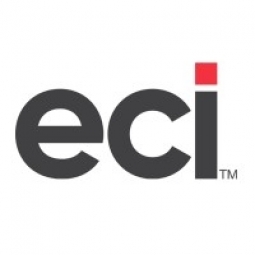公司规模
SME
地区
- America
国家
- United States
产品
- E2
技术栈
- Excel
- Quickbooks
实施规模
- Enterprise-wide Deployment
影响指标
- Customer Satisfaction
- Productivity Improvements
技术
- 功能应用 - 企业资源规划系统 (ERP)
适用行业
- 航天
- 医疗保健和医院
- 国家安全与国防
适用功能
- 离散制造
- 质量保证
用例
- 库存管理
- 供应链可见性(SCV)
服务
- 系统集成
关于客户
Rehtek Machine Company 是一家总部位于新泽西州的公司,专门生产微型部件。该公司由 Stephen 和 Paul Reh 于 1990 年创立,如今已发展成为一支拥有 15 名熟练工人的团队。Rehtek 为医疗、电子、航空航天和军事等多个行业生产微型部件。他们生产的零件尺寸从直径 0.01 英寸到 1.5 英寸不等,容错空间很小。质量、准确性和效率是该公司的首要任务。
挑战
Rehtek Machine Company 是一家为各行业生产微型部件的制造商,该公司在满足 ISO 认证的严格文档要求方面面临挑战。该公司一直在 Excel 电子表格中保存所有记录,但这种方式既不高效也不有效。缺乏适当的文档系统阻碍了该公司在 ISO 认证方面的进展,而 ISO 认证对于其客户和其自身的质量保证流程都至关重要。
解决方案
为了克服挑战,Rehtek 采用了 E2 软件。最初,他们之所以选择这款软件,是因为它能够快速无缝地创建满足 ISO 要求所需的文档。这让他们满怀信心地推进认证流程。然而,他们很快发现 E2 不仅仅是一个 ISO 文档工具。他们开始在流程的几乎每个步骤中使用 E2,从报价到开具发票。该软件用于报价、跟踪材料、安排工作、管理运输和控制质量。E2 还与 Quickbooks 无缝集成,Rehtek 将其用于会计工作。
运营影响

Case Study missing?
Start adding your own!
Register with your work email and create a new case study profile for your business.
相关案例.

Case Study
Airbus Soars with Wearable Technology
Building an Airbus aircraft involves complex manufacturing processes consisting of thousands of moving parts. Speed and accuracy are critical to business and competitive advantage. Improvements in both would have high impact on Airbus’ bottom line. Airbus wanted to help operators reduce the complexity of assembling cabin seats and decrease the time required to complete this task.

Case Study
Aircraft Predictive Maintenance and Workflow Optimization
First, aircraft manufacturer have trouble monitoring the health of aircraft systems with health prognostics and deliver predictive maintenance insights. Second, aircraft manufacturer wants a solution that can provide an in-context advisory and align job assignments to match technician experience and expertise.

Case Study
Hospital Inventory Management
The hospital supply chain team is responsible for ensuring that the right medical supplies are readily available to clinicians when and where needed, and to do so in the most efficient manner possible. However, many of the systems and processes in use at the cancer center for supply chain management were not best suited to support these goals. Barcoding technology, a commonly used method for inventory management of medical supplies, is labor intensive, time consuming, does not provide real-time visibility into inventory levels and can be prone to error. Consequently, the lack of accurate and real-time visibility into inventory levels across multiple supply rooms in multiple hospital facilities creates additional inefficiency in the system causing over-ordering, hoarding, and wasted supplies. Other sources of waste and cost were also identified as candidates for improvement. Existing systems and processes did not provide adequate security for high-cost inventory within the hospital, which was another driver of cost. A lack of visibility into expiration dates for supplies resulted in supplies being wasted due to past expiry dates. Storage of supplies was also a key consideration given the location of the cancer center’s facilities in a dense urban setting, where space is always at a premium. In order to address the challenges outlined above, the hospital sought a solution that would provide real-time inventory information with high levels of accuracy, reduce the level of manual effort required and enable data driven decision making to ensure that the right supplies were readily available to clinicians in the right location at the right time.

Case Study
Aerospace & Defense Case Study Airbus
For the development of its new wide-body aircraft, Airbus needed to ensure quality and consistency across all internal and external stakeholders. Airbus had many challenges including a very aggressive development schedule and the need to ramp up production quickly to satisfy their delivery commitments. The lack of communication extended design time and introduced errors that drove up costs.

Case Study
Gas Pipeline Monitoring System for Hospitals
This system integrator focuses on providing centralized gas pipeline monitoring systems for hospitals. The service they provide makes it possible for hospitals to reduce both maintenance and labor costs. Since hospitals may not have an existing network suitable for this type of system, GPRS communication provides an easy and ready-to-use solution for remote, distributed monitoring systems System Requirements - GPRS communication - Seamless connection with SCADA software - Simple, front-end control capability - Expandable I/O channels - Combine AI, DI, and DO channels




